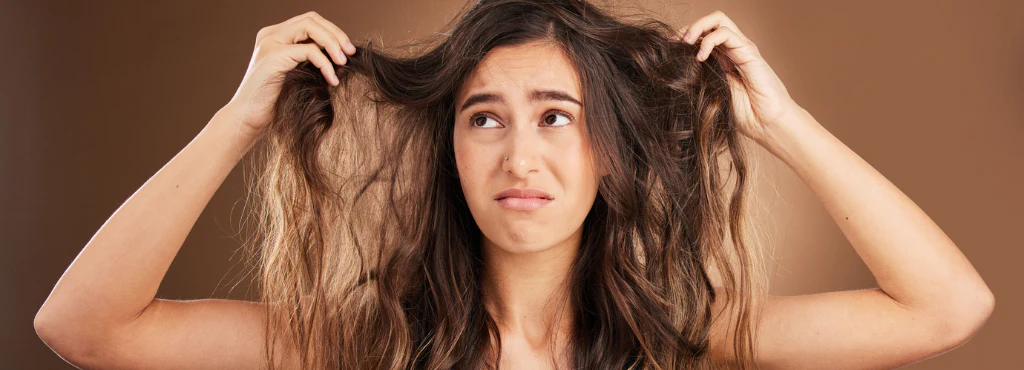Does your hair feel unmanageable, dry, or dull, even after using conditioner? You might be dealing with frizz, damage, or both. While they often look similar, the causes and treatments for each are different. Understanding the distinction between frizz and damage helps you choose the right frizzy hair products or damage repairing hair oils and shampoos to restore your hair health. Let’s break it down.
Why Hair Becomes Frizzy
Frizz occurs when the outer layer of your hair, known as the cuticle, lifts and allows moisture to enter. This causes the hair to swell and lose smoothness. Humidity, overwashing, lack of hydration, and heat styling are common culprits. Using the wrong products can also worsen frizz by drying out your hair or disrupting its natural balance.
To control frizz, focus on hydration and smoothness! Think sulfate-free shampoos, nourishing masks, and lightweight leave-in serums that lock in moisture without weighing your hair down.
What Damaged Hair Means
Hair damage goes beyond surface dryness. It happens when the internal structure of the hair weakens due to excessive coloring, heat, or chemical treatments. Damaged hair loses elasticity and strength, making it prone to breakage, dullness, and split ends. Repairing it requires deep nourishment, not just surface-level hydration.
Signs of Damage and Frizzy Hair
Here’s how to tell them apart:
- Frizzy Hair: Feels dry, rough, and puffy, especially in humid conditions. It may look unkempt even after styling.
- Damaged Hair: Appears dull and weak, with visible breakage, split ends, and loss of bounce. It often feels coarse and lacks shine.
If you notice both, it’s a sign your hair needs a combination of smoothing and repairing care.
Treatment Options
Frizzy Hair: Tips to Prevent Frizz
- Choose hydrating, anti-humidity products to maintain smooth, manageable hair.
- Use frizzy hair products like nourishing shampoos, leave-in creams, and smoothing serums to help seal the cuticle and protect from external factors.
- Avoid overwashing, as it can strip away natural oils and increase dryness.
- Switch to a microfibre towel or a soft cotton T-shirt to gently dry your hair and reduce frizz.
- Always finish your routine with a lightweight serum to lock in moisture and enhance shine.
- For long-lasting smoothness and frizz control, you can also explore a professional anti-frizz range such as L’Oréal Professionnel Liss Unlimited, formulated to help tame unmanageable, frizzy hair.
Damaged Hair: Tips to Repair Hair Damage
- Include regular oiling in your routine to restore strength, flexibility, and natural gloss.
- Opt for a repairing hair oil enriched with nourishing ingredients to replenish lost nutrients.
- It’s important to oil your scalp and lengths, especially before shampooing, as it boosts blood circulation and promotes healthier growth.
- Switch to dedicated damage-repair hair care products for maximum restoration. You can try L’Oréal Professionnel Absolut Repair Shampoo and Mask, which is specially designed to strengthen and revive damaged hair.
Frizz and damage may look alike, but they require different care strategies. Frizz needs moisture control and smoothing care, while damaged hair needs repair from within. The right balance of hydration and nourishment can bring your hair back to its healthiest, smoothest state.
For professional solutions tailored to your specific needs, visit your nearest L’Oréal Professionnel salon. Their experts can recommend advanced frizzy hair products and damage repairing products that deliver salon-like smoothness and strength, helping your hair look polished, manageable, and full of life.

